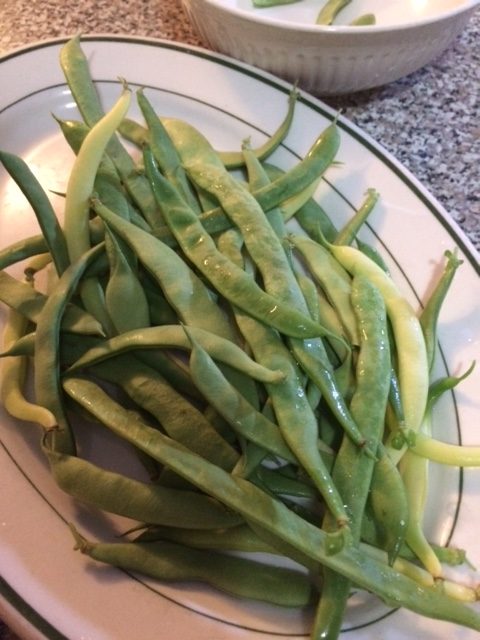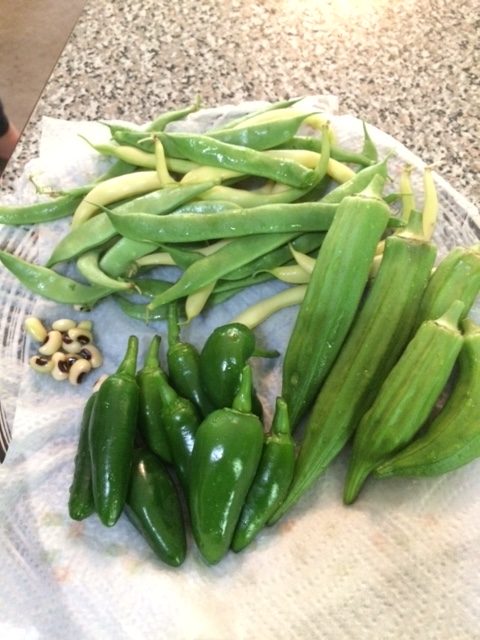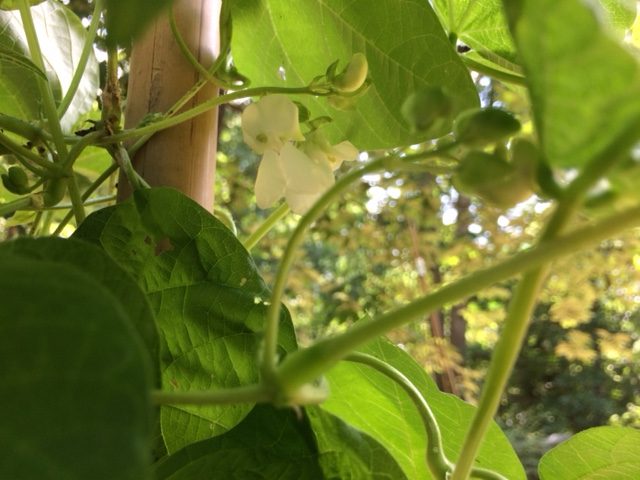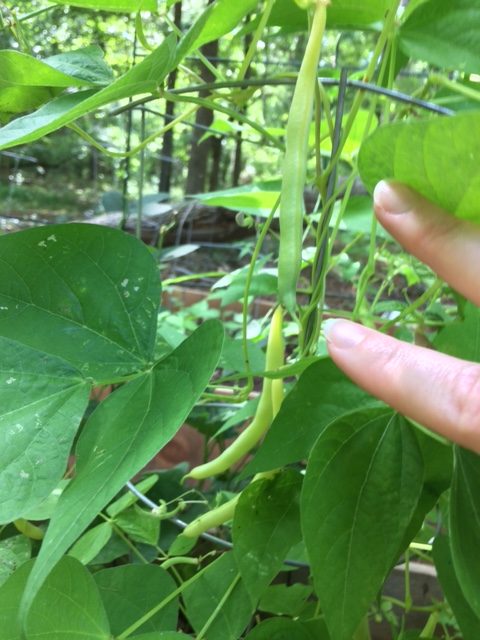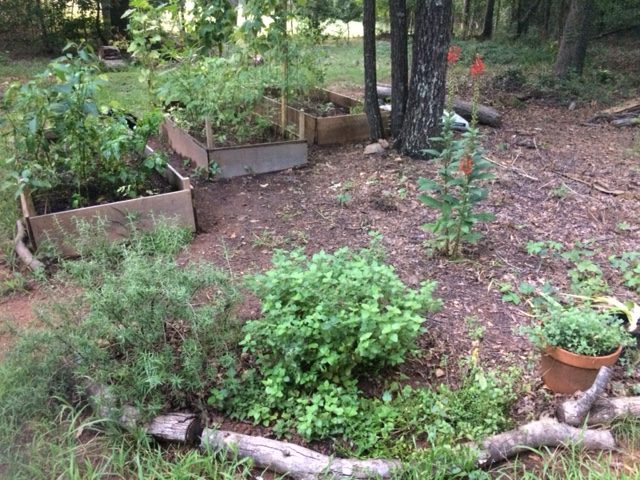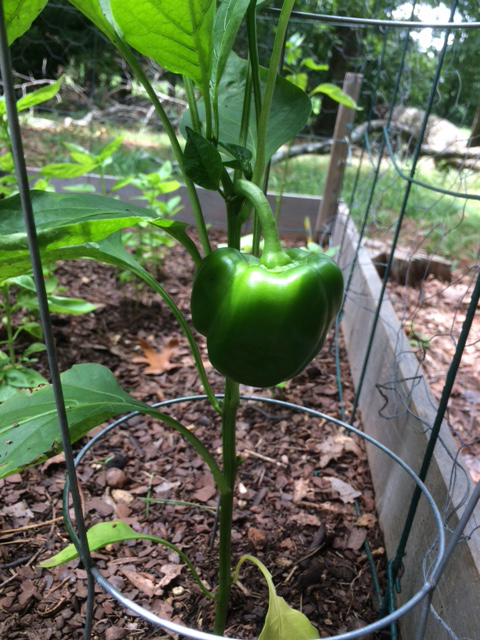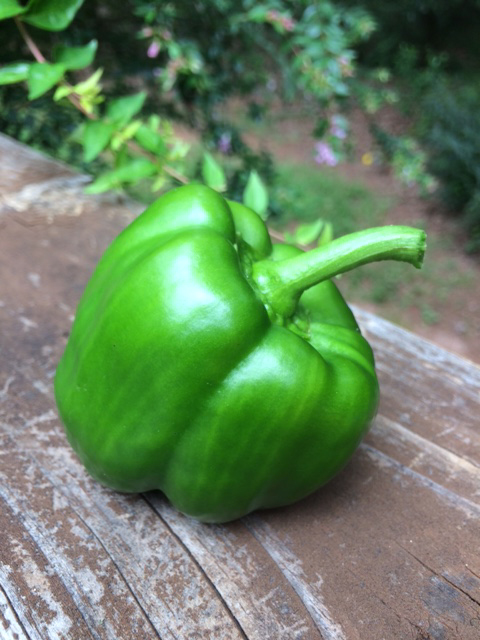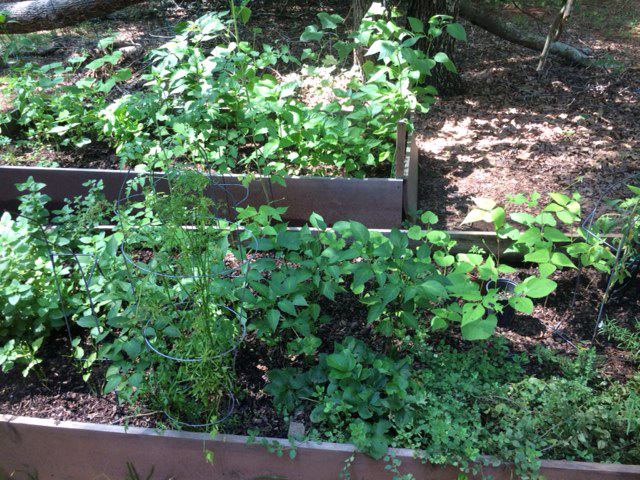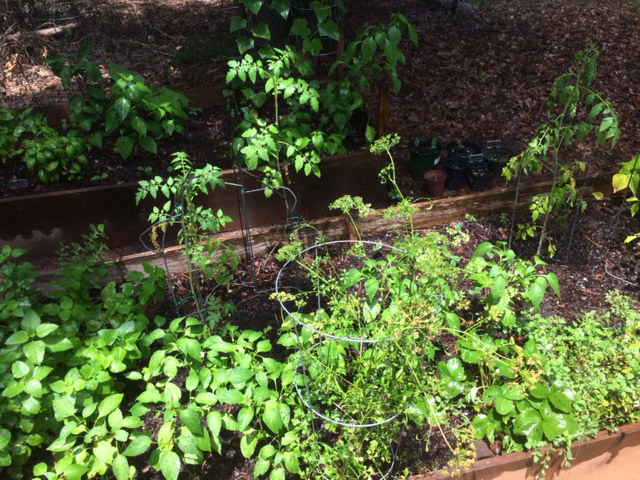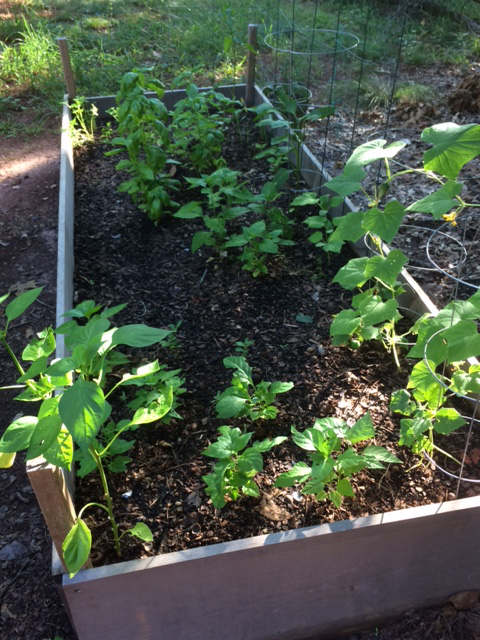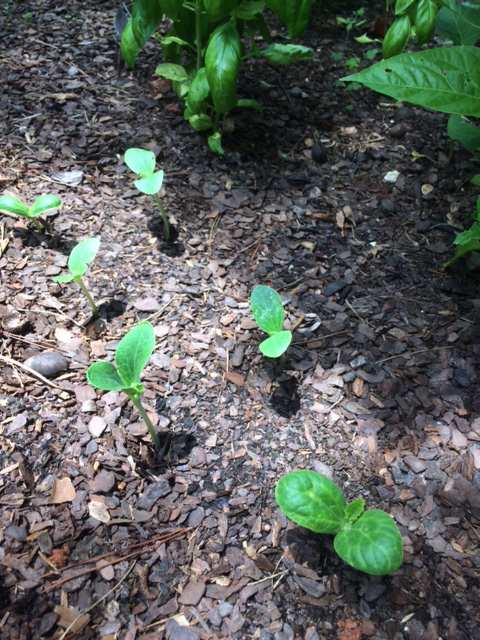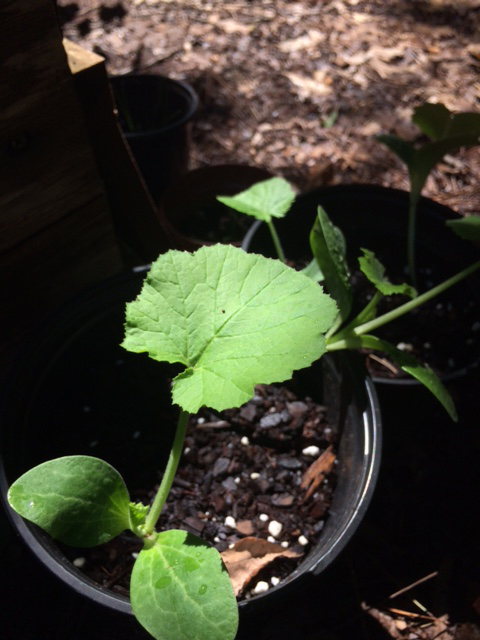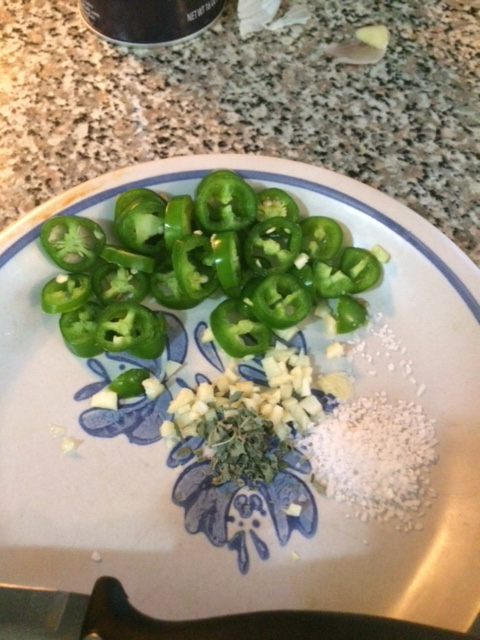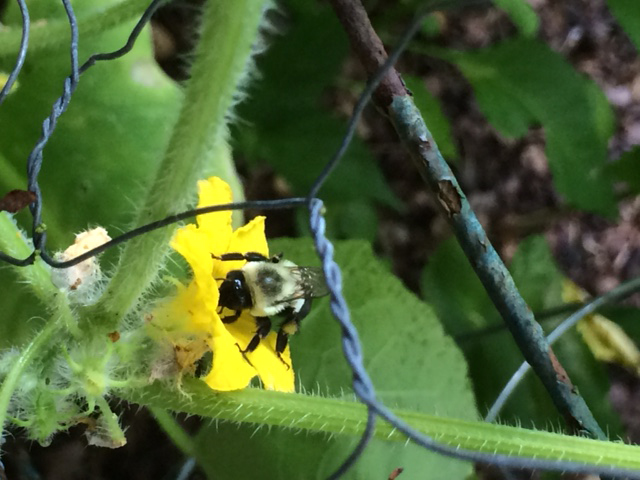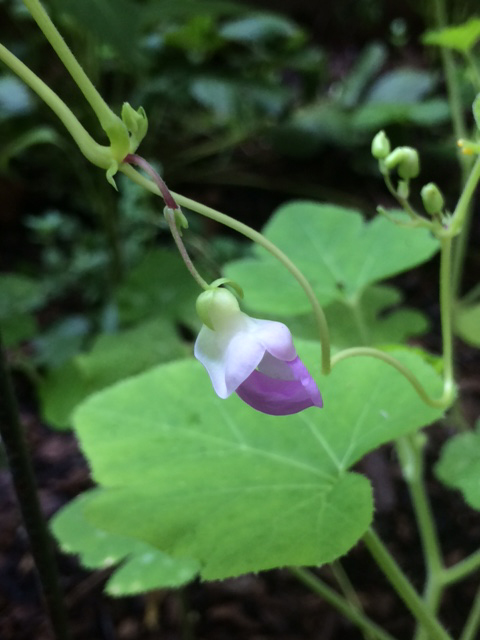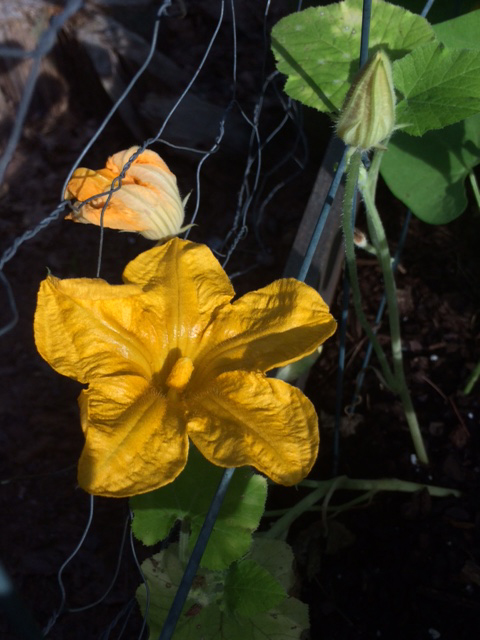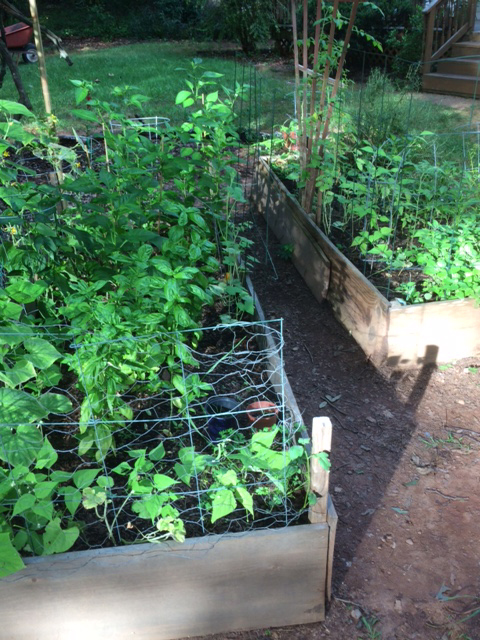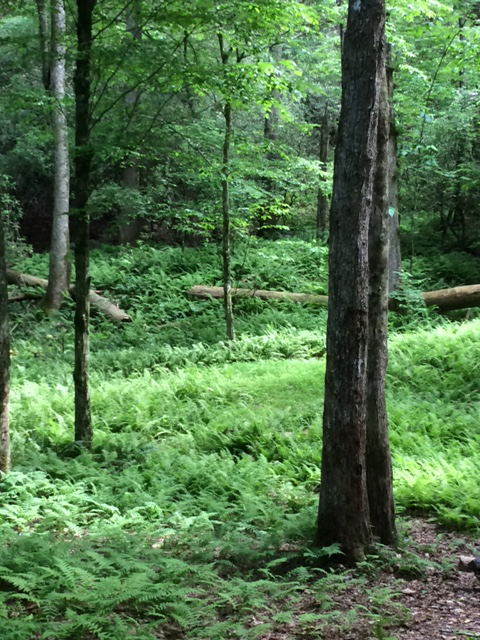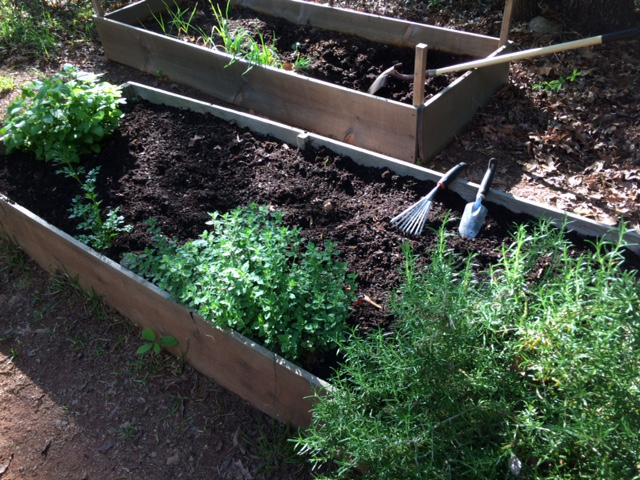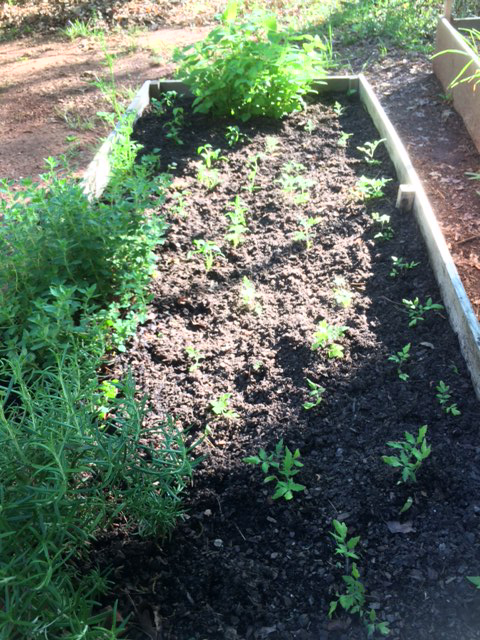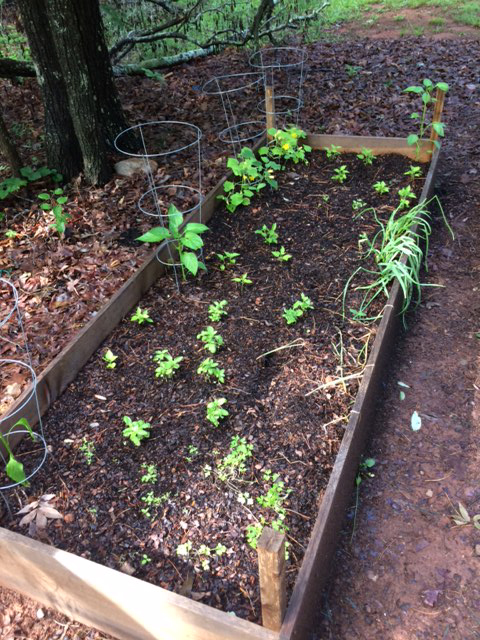The shrub of many names known as Sweet bubby, Sweet shrub, Carolina allspice, Spice shrub, & Spice bush lives in the eastern US, and is a native plant to Georgia. I remember from my youth the scent of sweet shrub (as it was known to us in the mountains of Southwestern NC).
Your nose leads you to the unassuming sweet shrub. You see the dark burgundy tasseled flower pods. The perfume permeates the air, a unique, deep aroma. Reach out, rub the burgundy pods to release more amazing fragrance – unlike anything else on earth I have smelled so far. Tangy and pungent, but sweet and spicy.
Researching this post, I discovered a wealth of info about these fascinating plants. More info than I can address in this one post, but I will follow up with this plant. I bought the one pictured last year at a native plant sale, in late April. I planted it in a mostly shady spot, under a huge hickory facing southwest – with the hickory’s shady protection from the scorching afternoon sun.
I wondered if the plant was used medicinally, as many native plants were, and still are. I discovered that this plant does have Toxic alkaloids. Use caution. The Cherokee are known to use it for some medicinal properties. It may also have been used as a wolf poison.
I don’t remember the dried fruits/seed pods George Ellison discusses in his article, “Sweet bubby bush,” from the “Smoky Mountain News” online. I eagerly await their arrival to refresh my memory.
Ellison also talks about ladies putting blossoms in their bosoms (bubby morphed from boobies) for perfume. I don’t remember them being in bosoms, but it probably helped cover the odor of snuff on the wind. Granny Hazel would dry them out, then put them in sachets for drawers, or bowls of potpourri.














